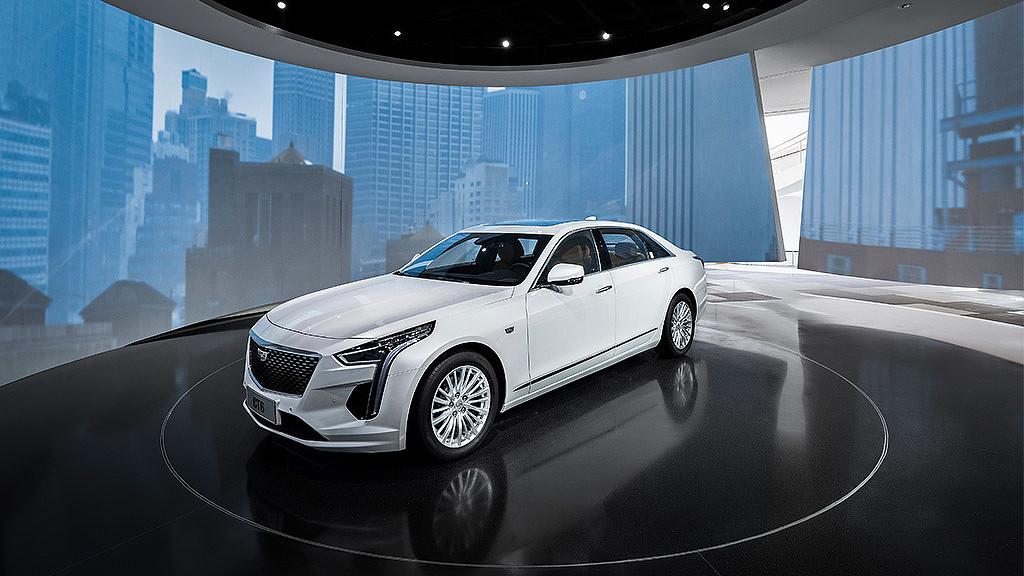What Will the ‘New Normal’ for Automotive Retail Look Like?
June 08, 2020 | By Josh Keough
Editor’s Note: This post is part of our ongoing exploration of how design is responding to the COVID-19 pandemic.
Automotive manufacturers and retailers were already facing questions about the future of the industry before the Covid-19 pandemic hit. Over time, advancements in electric drivetrains and autonomous vehicles are expected to greatly impact traditional business models. The rise of new types and modes of transportation will also change how architects and planners address urban design and the retail and servicing of vehicles.
The response to Covid-19 has already sparked rapid change by retailers to satisfy the needs of the market. Dealers, like all business owners, are currently rearranging displays and furniture to support social distancing. They’re also implementing stricter cleaning processes and updates such as touchless doors and fixtures to ensure the safety of customers and staff. And, services like home delivery and pick-up — once reserved largely for luxury-class vehicle brands — are, in many cases, now being implemented for volume brand sales and service customers.
The immediate response during shelter-at-home orders has been well documented (Gensler has covered this issue for multiple sectors.) But what happens next? Which changes are temporary and which ones should we consider to be more permanent?
The showroom still matters.Customers are still coming to the stores, and the showroom continues to be a critical factor in setting expectations and creating a rewarding retail experience. Buying or leasing a new car is a major investment and vehicle purchases still rank high on the financial decision chart, so seeing and test-driving vehicles continue to motivate in-store visits.
A recent survey by KPMG noted that 83% of customers would not purchase or lease a vehicle without a test drive, and that 47% of consumers still prefer doing so at the dealership. Simply put, the in-person experience cannot be replicated — but it can be evolved. Brands will still lean heavily on the showroom experience as an extension of their brand and a way for dealers to welcome customers and establish a relationship.
While the physical retail experience will remain a key part of the customer journey, it’s no secret that customers don’t particularly love the actual purchase or leasing process, even though they may have a good relationship with their dealership and want to kick the tires. Even prior to the pandemic, many dealers were aware of this and prided themselves in how much time they were able to trim out of the paperwork process. With Covid-19 restrictions on in-person sales, many retailers have fast-tracked the adoption of online tools.
Automotive News conducted a survey of dealers in March and found that 88% of respondents were already working with or moving towards migrating paperwork online. Post-Covid, sales associates and customers who are becoming acclimated to this digitized process may not want to regress to offline paperwork. In the future, prospective consumers can expect greater adoption of paperless transactions and subsequentially, spend less time in the store. New protocols can also move sensitive financial discussions to the privacy of buyers’ homes, which means that the need for most large private sales and finance offices will be greatly reduced, or possibly even eliminated over time.
The delivery process will change.We’ve all been there. The sale is over, you’ve been signing paperwork for a couple of hours, and your salesperson is trying desperately to keep your attention while they explain your new vehicle’s complex features while also working to win positive points on your customer satisfaction survey. Naturally, dealers want the customer to be satisfied, which, in turn, satisfies the manufacturer. In hopes that the celebratory moment of the vehicle handoff will keep the customer engaged, manufacturers have responded with facility requirements for dedicated delivery spaces for purchased vehicles.
But what if the retailers who have dabbled with home delivery stay the course and, especially with the advent of tools like using smart phones as keys, continue delivering the product right to customers’ doors? Manufacturers and retailers should think about how critical that often single-purpose space may be in the post-Covid market.
With social distancing requirements in place, lower volumes of appointments to manage, and various telehealth models to refer to, vehicle service departments have probably been the most creative in adapting during the pandemic. Some straight-forward changes have been implemented, including the use of sneeze guards, removal of some furniture in the customer lounge, and cleaning routinely. Some are also offering a night drop box for a touchless hand-off of keys.
Others are even picking up customers’ vehicles at their homes to minimize interaction, then following up with a video chat appointment with advisors and technicians from the service bay. In this case, the walk-around in the drive is not only replaced with digital tools, it’s also documented in a digital record. This can allow automotive retailers more ways to manage the volume in their workshops more efficiently.
If touch-free and virtual servicing become the norm, we need to rethink — and perhaps resize — the enclosed service drives. If most customers can be accommodated without having to come to the store, and work can be more evenly spread out, how large will service reception spaces and customer lounges need to be?
Service volumes will fluctuate.The pandemic has prompted a steep decline in vehicular traffic, and under lockdown conditions, customers simply haven’t been using their cars as much — lowering the need for even routine service. This short-term trend may continue to a lesser extent, depending on how much those in office-based jobs will be allowed or encouraged to work from home. This may, serendipitously, be a preview of what mass adoption of electric drivetrains may mean for service volume since preventative maintenance for EVs is largely limited to consumables like tires and wiper blades. At the same time, however, preliminary survey results and reduced usage of mass transit appear to suggest that many commuters are eschewing busses and rail for their own private vehicles or ride-sharing services. How much will these two trends offset? Dealers and brands will continue to chase a moving target.
All of these factors will likely change the way dealers, manufacturers, and designers need to look at spaces designed to support both automotive retail sales and service. Just how these new processes are adopted will vary by market, but there is little doubt that the industry will see more revolution than evolution over the next few years. Automobile manufacturers and dealers will need to work together to identify what facility guidelines and requirements should look like in order to boost consumer confidence — and convenience — and meet new expectations of a safe and rewarding automotive retail experience in a post-Covid era.
For media inquiries, email .

